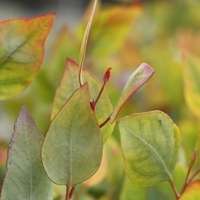Two-pronged approach to boost forest carbon storage

More carbon will sometimes be stored in forests if a bigger variety of tree species is planted along with key species - such as nitrogen fixing trees - that are known to contribute strongly to carbon storage, according to researchers at The University of Western Australia.
In a new study published recently in the journal Nature Climate Change, Dr Kristin Hulvey from UWA's School of Plant Biology and her team compiled and analysed data from existing forest studies to compare carbon storage in mixed tree plantings to carbon storage in monoculture plantings.
Dr Hulvey said it was important to know whether more diverse ecosystems provided higher levels of targeted ecosystems services - such as carbon storage - than less diverse ecosystems.
"Increasingly, governments and the private sector are using planted forests to offset carbon emissions. Some carbon offset projects use monocultures of exotic fast-growing trees, such as those used by the timber industry, to try to maximise carbon sequestration," Dr Hulvey said. "But few studies examine how tree diversity - species richness and/or stand composition - affects carbon storage in these plantings.
"A better understanding of how tree diversity affects carbon storage will be useful for developing guidelines to design carbon projects that store high amounts of carbon and have additional benefits such as providing more habitat for wildlife."
Dr Hulvey and her team focused on the carbon stored in the above-ground tree biomass (tree trunks and branches), using above-ground biomass as a proxy for carbon storage in planted forests.
"Although above-ground biomass is just one of several areas where carbon can be sequestered and stored in forests, it can represent a significant proportion of forest carbon," she said.
Dr Hulvey and her team found that mixtures of tree species stored at least as much carbon as monoculture plantings consisting of the single most productive species in the mixture. Additionally, at times, mixes outperformed monoculture plantings.
"In mixed-species stands, individual species, and in particular nitrogen-fixing trees, increased stand biomass. Further motivations for incorporating tree richness into planted forests include the contribution of diversity to total forest carbon-pool development, carbon-pool stability and the provision of extra ecosystem services.
Journal information: Nature Climate Change
Provided by University of Western Australia
















